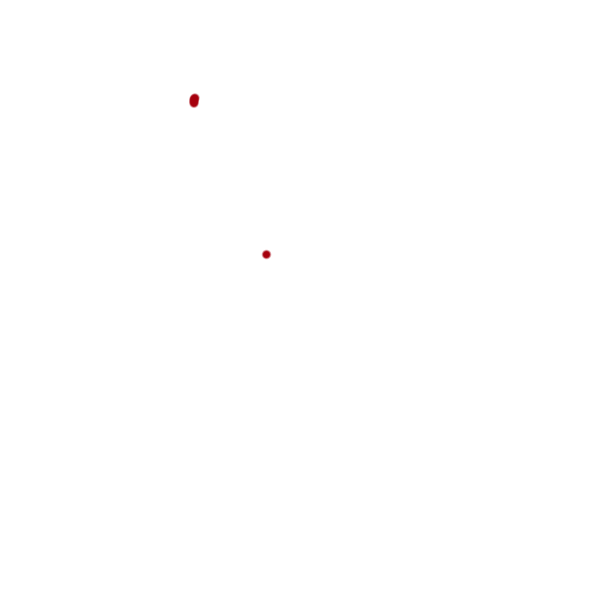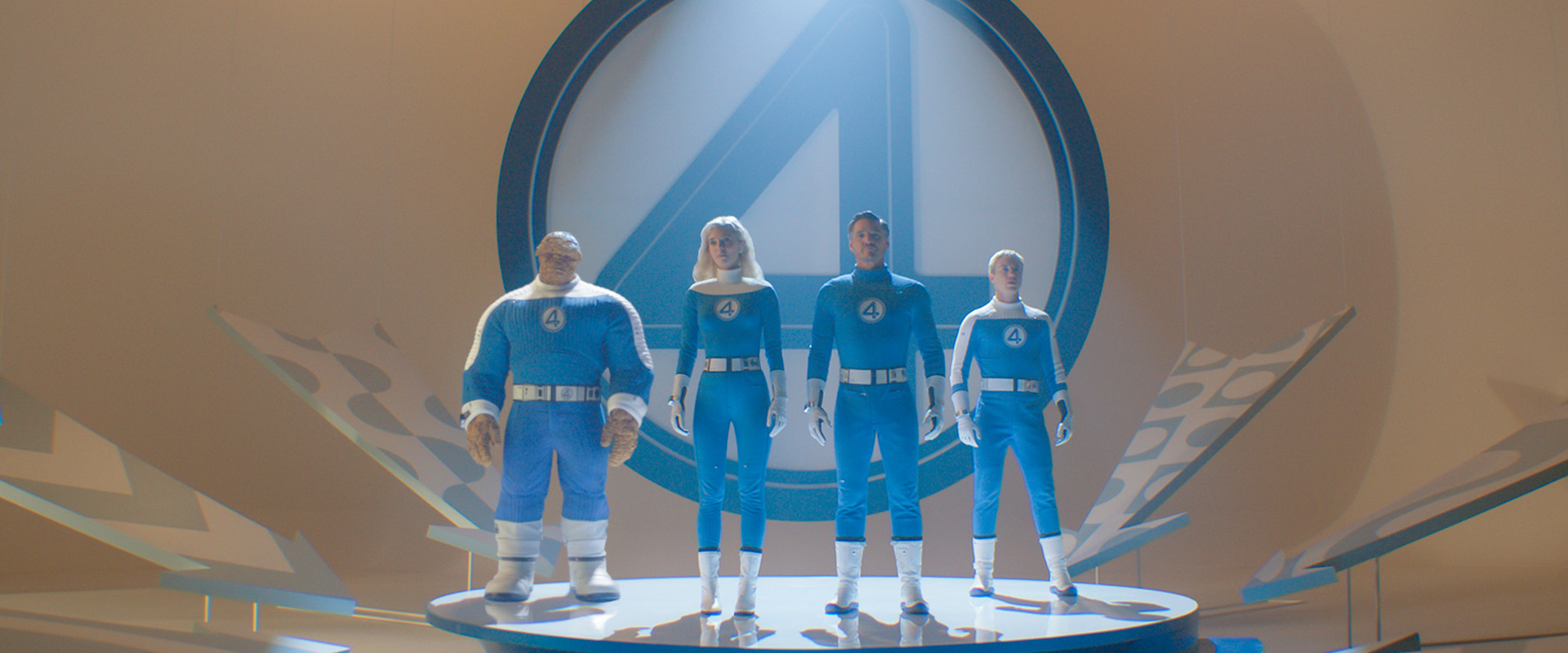Digital Domain Unveils Groundbreaking VFX Created for Marvel’s Iconic First Family in « The Fantastic Four: First Steps
Août 18, 2025
Digital Domain is proud to announce its significant contributions to Marvel Studios' highly anticipated film “The Fantastic Four: First Steps.” Under the leadership of VFX Supervisor Jan Philip Cramer, Digital Domain collaborated closely with Production VFX Supervisor Scott Stokdyk, contributing to nearly 400 shots featured in the final film. Set in a vibrant, 1960s-inspired retro-futuristic world, the film introduces Marvel's First Family, the Fantastic Four, as they welcome a new baby, juggle personal lives with superhero identities, and simultaneously defend Earth from the villains Galactus and Silver Surfer, who threaten humanity if baby Franklin is not surrendered.
Showcasing cutting-edge visual effects, advanced technical expertise, and nuanced character development, Digital Domain played a key role in working on five of the main characters for “The Fantastic Four: First Steps.” Digital Domain's work spanned multiple sequences set in the Baxter Building, depicting the Fantastic Four's daily routines and everyday life as superheroes. However, the artist’s core focus remained on The Thing, an asset shared among multiple vendors, and the charming and adorable Baby Franklin.
The Thing and New Pipelines
As pioneers in digital characters and photorealistic digital humans, Digital Domain was instrumental from the outset, collaborating closely with Marvel and other VFX vendors to develop The Thing. Cramer’s expertise was key in defining the FACS (Facial Action Coding System) shapes for Scanning and Training, and facial systems that would be used for the character. Cramer worked closely together with Clear Angle to ensure all vendor needs were covered to build this iconic character.
To capture full-body motion capture of the actor’s body, we utilized Xsens suits and conducted comprehensive testing. For the face, the Digital Domain team developed a revolutionary new pipeline utilizing the studio's newest proprietary markerless facial capture technology Masquerade3, delivering 300 intricate shots featuring The Thing. Notably, the Masquerade3 pipeline was shared across four other vendors on the film, an uncommon achievement in the VFX industry. Digital Domain provided all post-viz assembly scenes that relied on Xsens and Masquerade3 data cut to specific timecode ranges that were provided by the client. The Previs vendor, The Third Floor, received raw dumps of the Masquerade3 data on the character rigs. This unified approach gave the other vendors a starting point for the design, ensuring consistency in character performance and quality across every shot, regardless of the studio executing it. For this, Digital Domain set up over 1,160 assembly scene files that contained the character’s body and face to be utilized by all vendors as their starting point.
A significant and unusual challenge for The Thing involved the actor's beard, which we meticulously addressed during facial setup. While actors are typically required to remove facial hair for proper marker-based facial capture, our proprietary Masquerade3 technology allowed the actor to keep his beard without issue, showcasing our ability to overcome conventional limitations. Coincidentally, The Thing also grew a beard. Our artists faced the intricate task of simulating The Thing's developing stubble and beard. Beyond this, Digital Domain was responsible for creating nine distinct costumes for the character, including pajamas, cardigans, ties, spacesuits, trench coats, and more.
Masquerade3
Digital Domain’s proprietary tool Masquerade3 proved indispensable to this project, marking its most extensive application to date. This advanced system was also crucial for our post-visualization team, which usually processes 10 to 15 times more data than the VFX team does in finals. With Masquerade3 and Facial Rigging Supervisor Rickey Cloudsdale at the helm, he was able to single-handedly process hours of data overnight from each vendor and the post-vis team with remarkable efficiency, a feat that previously required vast teams and weeks to accomplish for a mere single shot. Subsequently, a dedicated team was formed to process scene files, integrating body and facial data for seamless sharing with animators.
In a monumental achievement, Cloudsdale, leveraging Masquerade3, processed approximately 60 hours of facial footage for three key characters: The Thing, Silver Surfer, and Galactus. Digital Domain led the charge as the central hub for all motion capture processes, including capturing the data, overseeing the facial and mocap prep for each character, and meticulously determining the precise FACS shapes.
Baby Franklin
For the Fantastic Four's newest member, Baby Franklin, Digital Domain conducted extensive tests using the studio’s proprietary face-swapping tool, Charlatan. VFX Supervisor Jan Philip Cramer used his own child to film a proof of concept to help evaluate and inform these tests under the guidance of director Matt Shackman. With our work focusing on Franklin once he arrives on earth, Digital Domain artists were responsible for creating both Newborn Franklin and an older version of Baby Franklin, contributing to a total of 150 shots, and designing several different outfits for the character. Cramer was instrumental in identifying the selected baby who portrayed Franklin in the film, spending over a month with the selected baby and her mother to ensure the desired actions would be accomplished. Together with Clear Angle, a special “baby friendly” scanning booth was designed for the specific needs of the film. Baby Franklin was scanned over the course of two weeks at the beginning of the shoot to ensure the most life-like CG replication of Franklin.
Invisible Woman, Human Torch and HERBIE
Beyond our extensive work on The Thing and Baby Franklin, Digital Domain also delivered significant contributions to other pivotal characters. For Invisible Woman, we were involved in the early development of her signature invisibility effect and crafted the visually unique ultrasound of her pregnant stomach. Our team also contributed to the early development of Human Torch's dynamic fire effects, which are showcased in the Baxter Building scenes as he flies in from outside and during the sequence where he glows within the dark lab. Collaborating closely with the Marvel Art Department, we designed and built HERBIE from the ground up, meticulously detailing his internal mechanics and even dressing him in an apron. We brought to life the memorable sequence of HERBIE baby-proofing the house, complete with inserting plug covers, installing fire alarms, drawer proofing, and setting up a baby gate.
In addition to our character work, Digital Domain artists contributed to several major sequences throughout the film, including the scene where Reed experiments with the egg in an attempt to beam away Earth to evade Galactus. Our contributions were also instrumental in the film’s marketing efforts, with our assets featured prominently in the Comic-Con showcase, official trailers, an Entertainment Weekly feature, and more.


